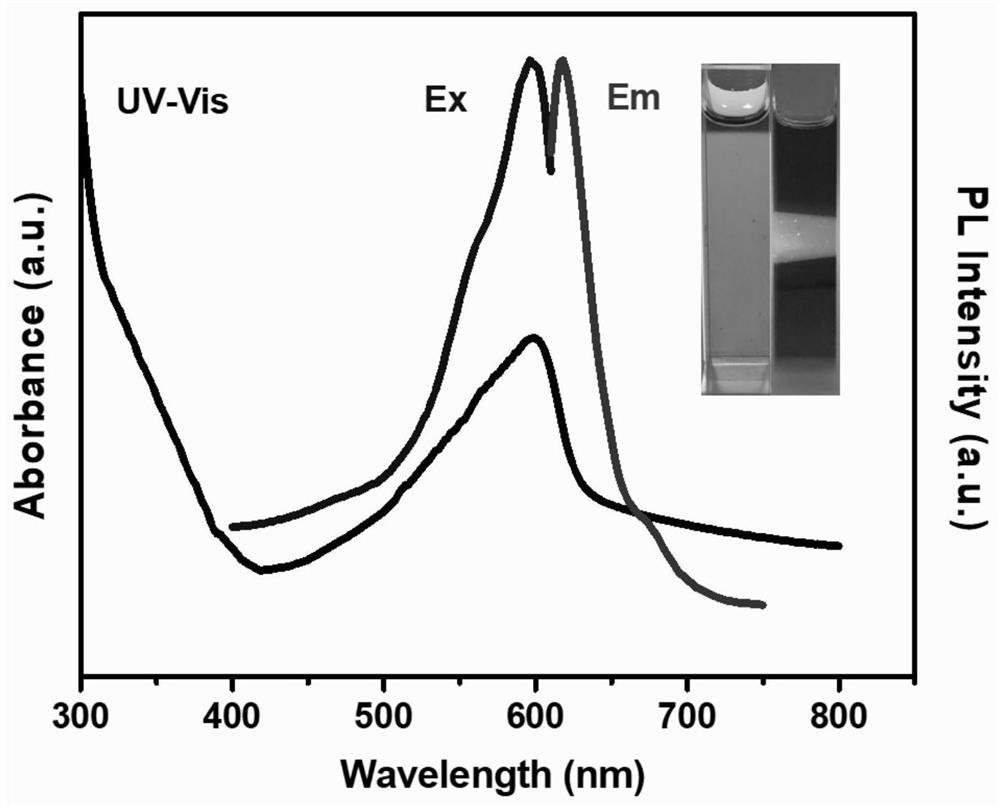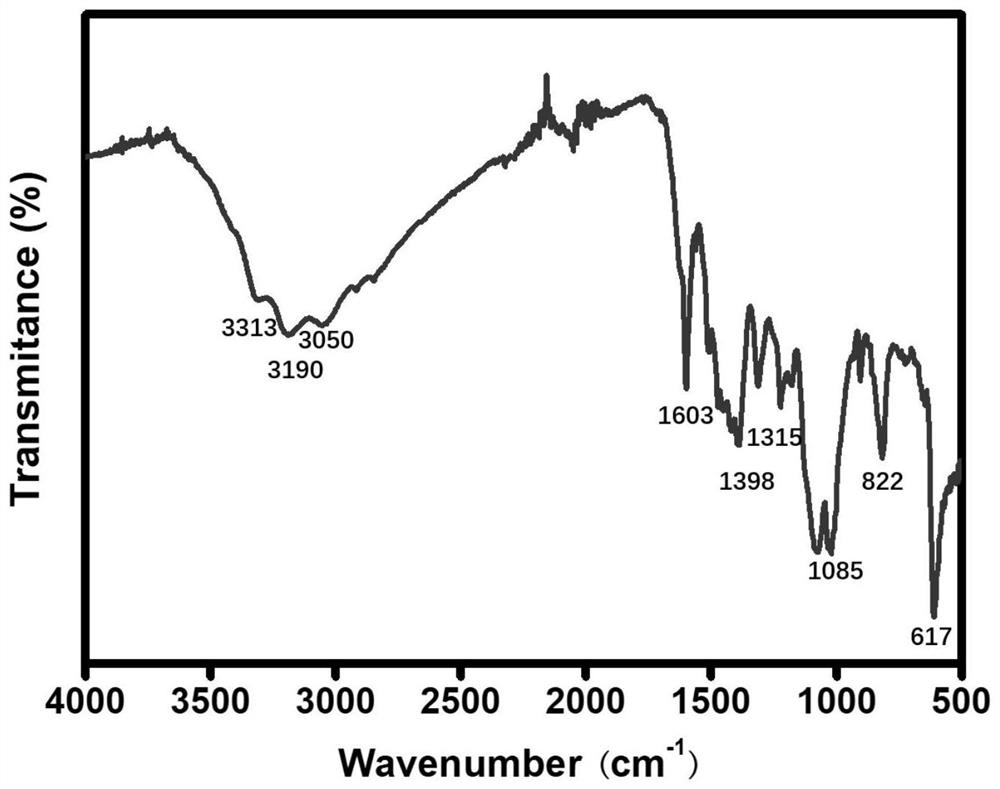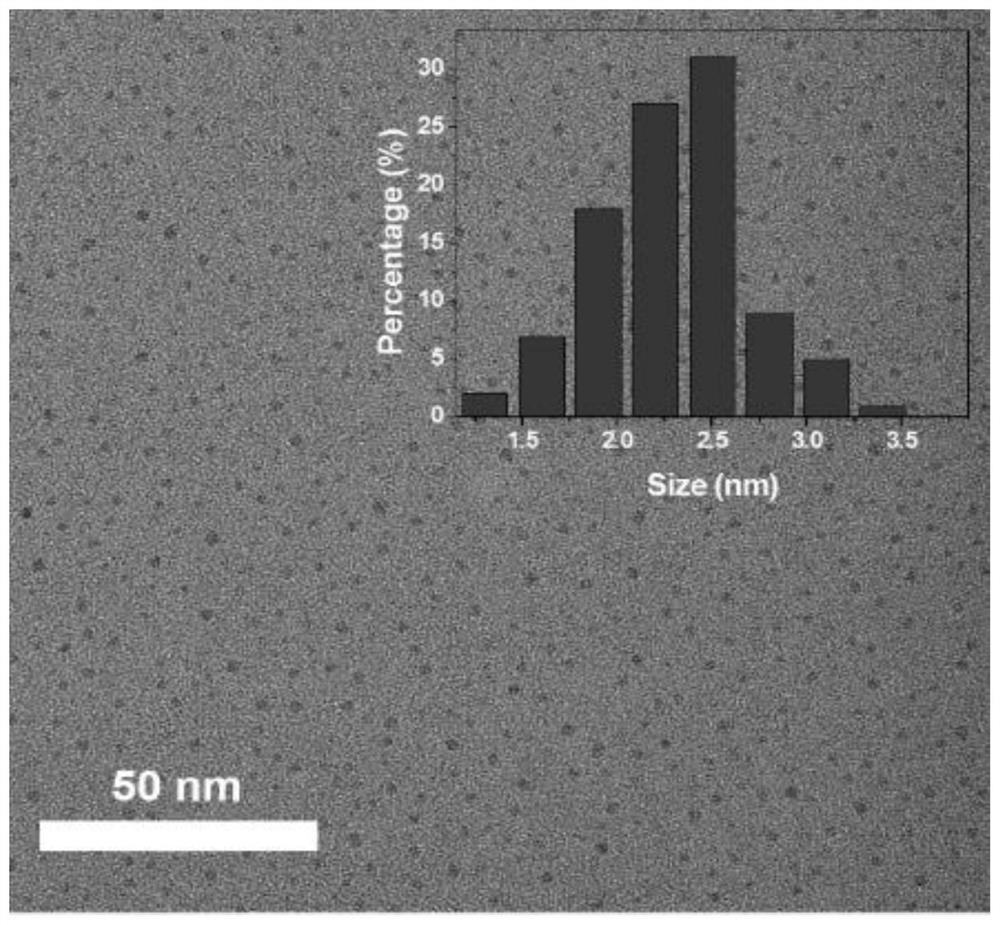Nitrogen-sulfur-doped efficient red light emission carbon dot, preparation method and application thereof
A carbon dot, high-efficiency technology, applied in chemical instruments and methods, nano optics, luminescent materials, etc., can solve the problems of complicated and expensive instruments, time-consuming experimental process, toxic reagents, etc. small effect
- Summary
- Abstract
- Description
- Claims
- Application Information
AI Technical Summary
Problems solved by technology
Method used
Image
Examples
Embodiment 1
[0033] Dissolve 0.054g of o-phenylenediamine and 0.38g of ammonium thiocyanate in 5mL of ultrapure water at a molar ratio of 1:10, and stir for 20min at room temperature in a nitrogen atmosphere to form a uniform mixed solution. Move the mixed solution to a high-pressure reactor, and place it in an oven at 150°C for 12 hours; after the reaction, cool down to room temperature to take out the original solution of carbon dots, and remove the original solution by centrifuging at a constant temperature of 8000rpm at 25°C for 25min. A lump precipitated and a dark red supernatant was obtained. Take the centrifuged solution above and use a dialysis bag with a molecular weight cut-off of 100DA to remove small molecular impurities to obtain a relatively pure carbon dot solution; freeze-dry the dialyzed carbon dot solution for 20 hours to obtain solid carbon dot powder.
Embodiment 2
[0035]Take 0.054g of m-phenylenediamine and 0.19g of sodium thiocyanate dissolved in 5mL of ultrapure water, the molar ratio is 1:5, and stirred at room temperature and nitrogen atmosphere for 20min to form a uniform mixed solution. Move the mixed solution to a high-pressure reactor, and place it in an oven at 200°C for 12 hours; after the reaction, cool to room temperature to take out the original solution of carbon dots, and remove the original solution by centrifuging at a constant temperature of 8000rpm at 25°C for 25min. A lump precipitated and a dark red supernatant was obtained. Take the centrifuged solution above and use a dialysis bag with a molecular weight cut-off of 100DA to remove small molecular impurities to obtain a relatively pure carbon dot solution; freeze-dry the dialyzed carbon dot solution for 20 hours to obtain solid carbon dot powder.
Embodiment 3
[0037] Dissolve 0.054g of p-phenylenediamine and 0.38g of ammonium thiocyanate in 5mL of ultrapure water with a molar ratio of 1:10, and stir at room temperature for 20min in a nitrogen atmosphere to form a uniform mixed solution. Move the mixed solution to a high-pressure reactor, and place it in an oven at 200°C for 12 hours; after the reaction, cool to room temperature to take out the original solution of carbon dots, and remove the original solution by centrifuging at a constant temperature of 8000rpm at 25°C for 25min. A lump precipitated and a dark red supernatant was obtained. Take the centrifuged solution above and use a dialysis bag with a molecular weight cut-off of 100DA to remove small molecular impurities to obtain a relatively pure carbon dot solution; freeze-dry the dialyzed carbon dot solution for 20 hours to obtain solid carbon dot powder.
PUM
| Property | Measurement | Unit |
|---|---|---|
| particle size | aaaaa | aaaaa |
| particle diameter | aaaaa | aaaaa |
| particle size | aaaaa | aaaaa |
Abstract
Description
Claims
Application Information
 Login to View More
Login to View More - R&D
- Intellectual Property
- Life Sciences
- Materials
- Tech Scout
- Unparalleled Data Quality
- Higher Quality Content
- 60% Fewer Hallucinations
Browse by: Latest US Patents, China's latest patents, Technical Efficacy Thesaurus, Application Domain, Technology Topic, Popular Technical Reports.
© 2025 PatSnap. All rights reserved.Legal|Privacy policy|Modern Slavery Act Transparency Statement|Sitemap|About US| Contact US: help@patsnap.com



